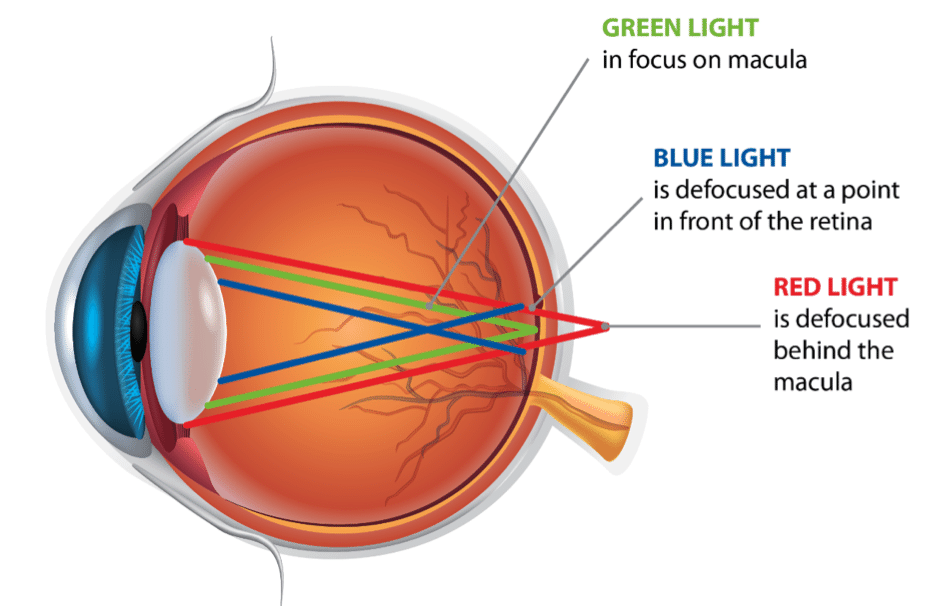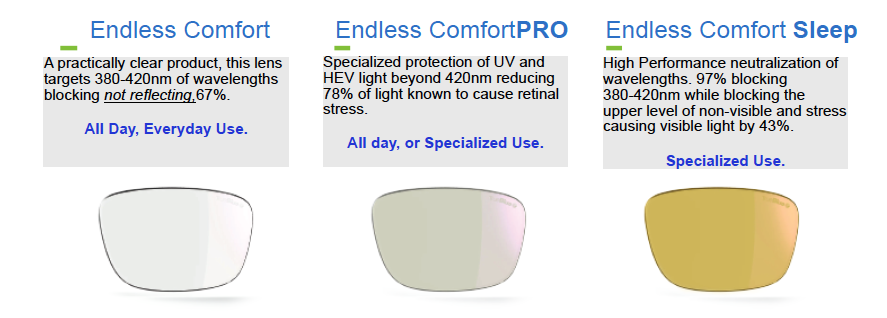What is Blue Light and UV light?
Blue light has become an industry buzz word. We all know that the sun is the main source of blue light, and being outdoors during daylight is where most of us get the majority of our exposure to it. But with this exposure comes hidden danger. UV is what causes sunburns - and while your eye may not tan, it too is being affected by this light.
When outside, all light from the sun travels through the atmosphere. It is the shorter, high energy blue wavelengths that scatter easily, making the sky look blue.
UV light is proven to cause short term and long term damage to the eye in the forms of Photokeratitis, Cataract development and macular degeneration. UVB hurts the surface of the cornea whereas UVA penetrates deeper into the retina and eye.
Blue Light is not proven to cause long term damage at this time, but prolong exposure can add to the discomfort and strain of lightwave exposure.
Food for thought
The sun emits 50x more blue light than any screen.
Blue Light Marketing is driving awareness to how light can be damaging to your eye, are you informing patients of UV as well?
What is visual fatigue?
Visual fatigue also referred to as digital eye syndrome refers to the feeling of tired eyes, brief blurred vision, headaches and light sensitivity caused by extended focus. Blue light is constantly being transmitted during this time, which the wavelengths emitted are the same wavelengths that disrupt circadian rhythm, our bodies natural wake and sleep cycle.
Light focused on the retina provides the clearest vision. Blue wavelengths, like those emitted from backlit screens, focus in front of the retina causing two things to happen. Blue light continues onto the retina and causes blur, then the eye struggles to focus on the light that is focused in front of the retina. This compounding effect is a major contributor to digital eye strain.
Products and Solutions
UV coatings, polycarbonate and Trivex lenses block UVA and UVB rays from being able to pass through the lens to the eye. Blue Light Filter lenses, when built into the resin and material of the lens, block various % of blue light wavelengths and 100% of UV.
Transitions lenses also block UVA, UVB and HEV Blue Light!
Ask for Clear Blue Filter for any material, any SV or digital PAL to receive blue light protection.
Inform the patient of UV exposure and long term damages.
Inform the patient of the primary source of blue light comes from the sun.
Explain digital eye fatigue and the effect of prolonged usage of screens causing sleep disruption and overall discomfort.
Offer solutions in the form of UV and Blue Light Filter materials.
Offer solution of sun protection in the form of quality sunglasses.
Advanced Protection
For advanced protection, look for Endless Comfort, Endless ComfortPRO and EndlessSleep lenses to block the highest level of target wavelengths.
Endless Comfort marries specialized blue light filtering polymers, glare reducing polymers and specially designed lens designs to reduce visual fatigue in SV, Progressive and Office/Task lens pairs.
Who is this for?
Patients experiencing frequent migraines.
Patients who do prolonged digital tasks, especially at night.
Patients with photophobia and light sensitivity.
FAQs
Q: Do blue light AR coatings block blue light?
A: Blue light AR coatings add a layer to the lens which purpose is to reflect light. This reflection is not targeting a specific wavelength of light, but all light. This defeats the primary purpose of AR coatings and can be dangerous for night driving .
Q: Do you have to add AR coating for Clear Blue Filter?
A: No.
Q: What about Blue Zero, Smart Blue Filter, Blue Capture, are these the same?
A: Most brands of lens manufactures have their own version of a branded blue light prevention lens. These names are the brand names of Clear Blue Filter.




